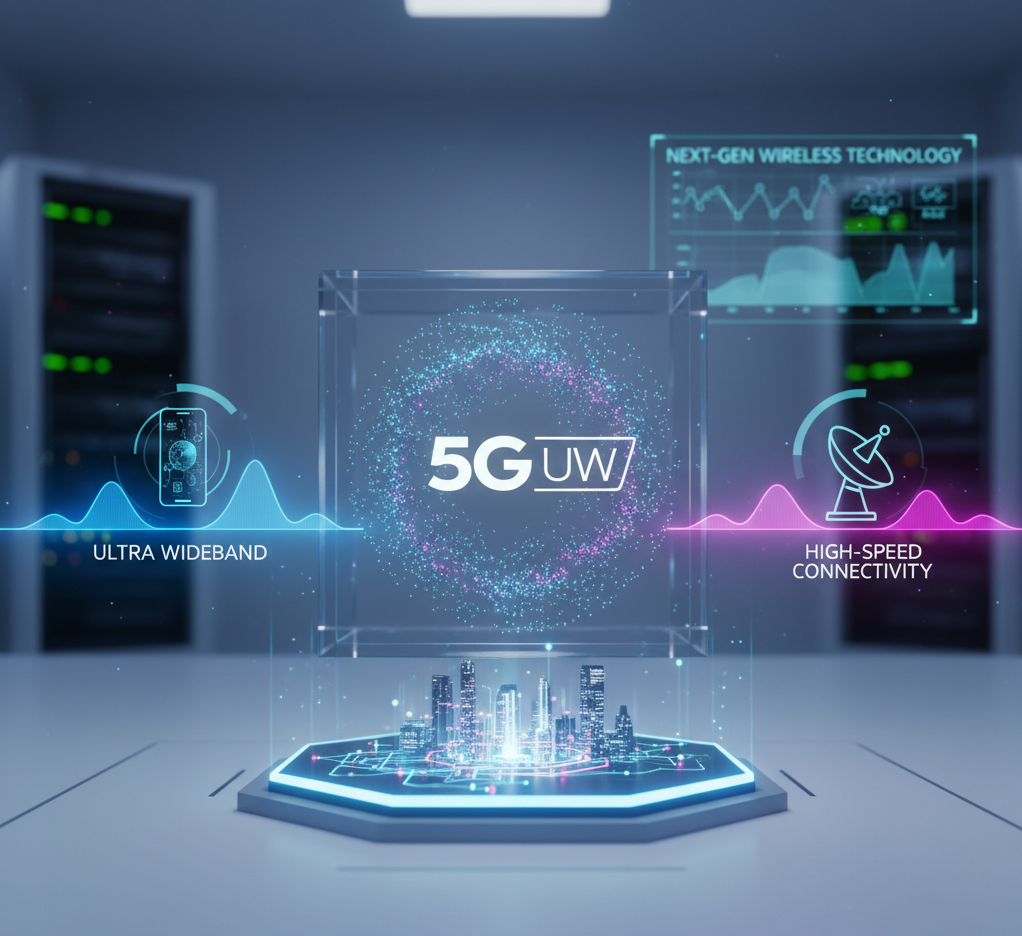The rollout of fifth-generation (5G) cellular networks has been a major topic in technology circles across the United States. As new 5G devices and plans become commonplace, you might notice an unfamiliar symbol pop up on your smartphone screen: 5G UW. This designation, often seen by users on the Verizon network, signals a connection to the fastest, highest-performance tier of 5G currently available. But what exactly is 5G UW, and how does it differ from the standard 5G experience?
Defining What is 5G UW?
The acronym 5G UW stands for 5G Ultra Wideband. It is the brand name used by Verizon in the United States to distinguish its premium, high-speed 5G service from its broader, lower-speed 5G network (often referred to as 5G Nationwide).
In technical terms, 5G UW primarily utilizes a combination of two specific types of radio spectrum:
- High-Band Spectrum (mmWave): Also known as millimeter-wave, this is the powerhouse of 5G UW. It operates on very high frequencies (typically above 24 GHz). This spectrum provides incredibly fast speeds—often exceeding 1 Gbps—and extremely low latency (lag). However, mmWave signals have a very short range and are easily blocked by obstacles like walls, trees, and even heavy rain.
- Mid-Band Spectrum (C-Band): More recently, Verizon has also incorporated mid-band spectrum (specifically the C-band, operating around 3.7 GHz) into its Ultra Wideband service. Mid-band offers a fantastic balance: speeds that are significantly faster than low-band 5G or 4G LTE, coupled with a much wider coverage area and better penetration through buildings compared to mmWave.
The presence of the 5G UW icon on your phone indicates that you are connected to one of these high-performance networks, promising a vastly superior experience compared to standard 4G LTE or basic low-band 5G.
The Spectrum Strategy: Why Carriers Differentiate
Not all 5G is created equal, and this is why American carriers like Verizon have adopted distinct branding like 5G UW (Ultra Wideband) to manage customer expectations and highlight their different network layers.
The Three Tiers of 5G Spectrum
The entire 5G network structure in the U.S. can be generally broken down into three tiers based on their frequency band, each having a unique trade-off between speed and coverage:
- Low-Band 5G: Operates on frequencies under 1 GHz. This is the foundation of “5G Nationwide,” offering broad coverage that can reach rural and suburban areas and penetrate buildings well. The speeds, however, are only marginally faster than 4G LTE.
- Mid-Band 5G: The “sweet spot” (e.g., C-Band) offers a balance of fast speeds and good range. This is the key to providing widespread, high-quality 5G service across cities and suburbs. T-Mobile brands its mid-band as “Ultra Capacity” (5G UC).
- High-Band 5G (mmWave): The core of the original 5G UW vision. It provides “fiber-like” speeds but is limited to dense urban areas, stadiums, and specific high-traffic locations due to its extremely short range.
By using the 5G UW label for both its mmWave and C-band deployments, Verizon signals that the user is connected to a network that provides a truly next-generation experience, whether it’s the ultra-fast speeds of mmWave or the excellent mix of speed and range from C-band.

The Transformative Benefits of 5G UW
The power of 5G UW goes beyond simply downloading files a little faster; it enables entirely new mobile experiences due to its high throughput and minimal latency.
Blazing Fast Download and Upload Speeds
In optimal mmWave 5G UW coverage areas, users can experience multi-gigabit speeds. This means downloading a full-length high-definition movie in seconds, or uploading large files almost instantaneously. Even with the mid-band C-Band, speeds are typically in the hundreds of megabits per second, offering a massive upgrade from 4G LTE.
Ultra-Low Latency
Latency is the delay before a transfer of data begins following an instruction. 5G UW significantly reduces latency, often to single-digit milliseconds. This is critical for applications that require near-instantaneous response times:
- Real-Time Gaming: Eliminates lag, allowing for console-quality gaming on mobile devices and cloud platforms.
- Virtual and Augmented Reality (VR/AR): Provides the necessary responsiveness and bandwidth for smooth, immersive VR and AR experiences that were previously impossible on mobile networks.
- Remote Work and Collaboration: Enables seamless, high-quality video conferencing and the use of cloud-based applications that require constant, high-speed data flow.
Enhanced Network Capacity
In crowded environments like sports arenas, concert venues, or busy city centers, network congestion on older 4G LTE networks often leads to slow speeds. 5G UW‘s combination of mid-band and mmWave spectrum allows the network to handle vastly more connected devices simultaneously, ensuring everyone connected still enjoys high-speed performance.
Accessing 5G UW
To access the high-performance features of 5G UW, American consumers need a few key components:
- A Compatible Device: You must have a 5G-enabled smartphone that specifically supports the carrier’s 5G UW bands, particularly the mmWave and C-band frequencies. Most modern flagship and upper mid-range devices sold in the last few years are compatible.
- A Qualifying Plan: Carriers often include access to their premium 5G networks, such as 5G UW, with specific, often higher-tier, unlimited data plans.
- Coverage Availability: While 5G Nationwide covers most of the U.S., 5G UW is still expanding. Its initial and strongest presence is found in dense urban centers, business districts, airports, and major entertainment venues.
The Future of 5G UW
The evolution of 5G UW in the U.S. is a continuous process. As carriers deploy more mid-band C-Band towers, the coverage area for high-speed 5G is rapidly expanding from city hot spots to broader suburban and rural areas. This increased range and capacity promise to solidify 5G UW as the foundation for new technologies and services, cementing its role in powering the next generation of mobile connectivity for millions of Americans.